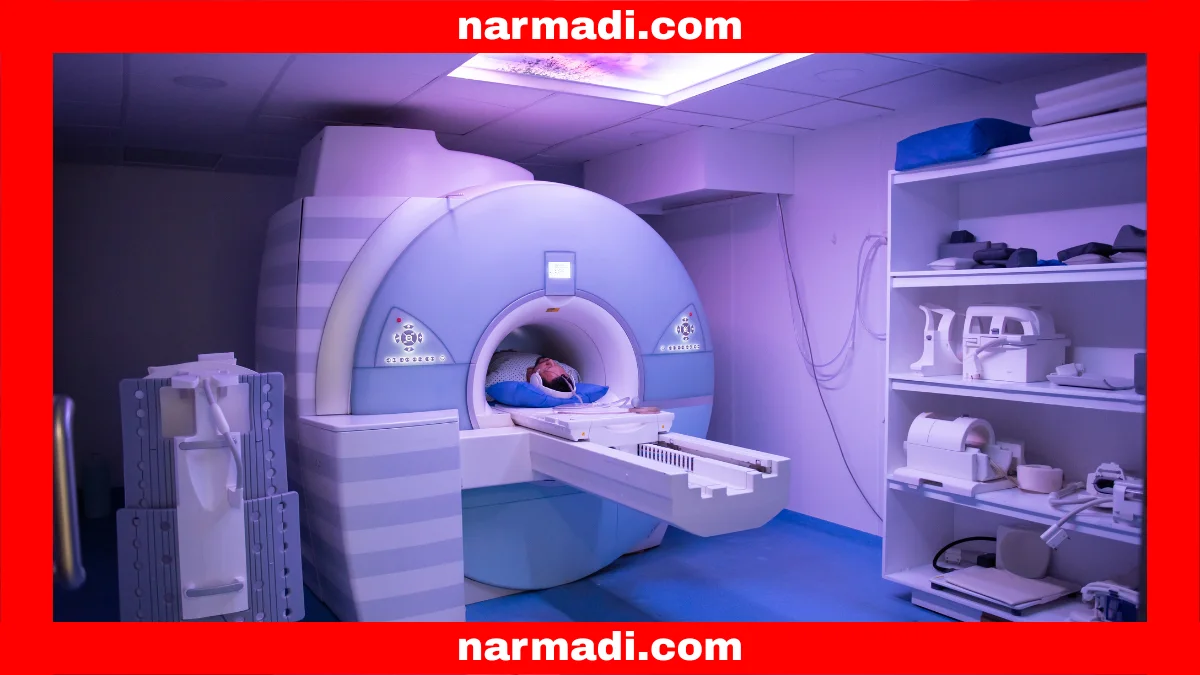Technology has penetrated various industrial sectors, one of which is the health sector. Magnetic Resonance Imaging (MRI) is a medical device equipped with Bluetooth or WiFi technology to help doctors accurately diagnose diseases in your internal organs.
Are you familiar with this technology in the health sector? This article will discuss MRI technology, starting from its definition, how it works, its functions, its benefits, the differences between CT scan, and regulations.
Table of Contents
What is MRI?
Magnetic resonance imaging is an electronic device in the field of health that is a non-invasive medical imaging procedure that uses strong magnets and radio waves to scan a patient’s internal organs. This medical examination device will produce detailed images of organs, bones, muscles, and other soft tissues in the body.
Also Read
This device is often used by doctors as a diagnostic tool to diagnose diseases, detect medical conditions, and monitor treatment. Unlike other medical devices that are also useful for examining internal organs, MRI does not use X-ray radiation.
How MRI Works

Magnetic resonance imaging works to produce images of internal organs using a strong magnetic field and radio waves. Here’s how it works in more detail:
- Use of magnetic fields: A very strong magnetic field generated by the device surrounds the patient’s body.
- Transmission of radio waves: The body receives radio waves that trigger resonance in the hydrogen atoms found in body tissue.
- Capturing signals with sensors: Sensors in the MRI machine capture the energy released by the radio waves.
- Processing data into images: The collected information is processed by a computer to create highly detailed three-dimensional images of the body’s interior, such as the brain, spinal cord, internal organs, muscles, and joints.
The Functions of MRI
The magnetic resonance imaging has several functions that help doctors diagnose internal diseases in patients. Here are some of its functions:
- Diagnosing diseases: Helps doctors identify internal health problems, such as strokes, tumors, or degenerative diseases of the brain and spinal cord, by providing highly detailed three-dimensional images.
- Monitoring treatment: This medical device evaluates the effectiveness of ongoing therapy or treatment for a patient’s condition.
- Planning medical procedures: The planning of surgery or other medical procedures depends on MRI results, which provide a clear picture of the location of the problem.
The Benefits of MRI

Magnetic resonance imaging has many benefits in the medical world. According to various sources, here are 5 benefits that help the medical world:
1. Detecting cancer
MRI can be used to identify difficult diseases, one of which is cancer. Not only does it detect cancer, but this tool is also capable of monitoring its development. This tool can reach parts of organs that are difficult to access, such as the brain, liver, or prostate cancer, which cannot be reached by other imaging methods.
2. Detecting problems in the brain and spinal cord
In addition to cancer, MRI can also detect disorders in the brain and spinal cord, such as tumors, strokes, or injuries, with great effectiveness. This makes it very useful for medical professionals in diagnosing neurological diseases or nerve disorders.
3. Examining muscles and joints
For athletes or those who have suffered muscle and joint injuries, MRI is very helpful. This tool is useful for viewing damage to soft tissue, ligaments, tendons, or cartilage, which may be difficult to see with X-rays.
4. Monitoring diseases during treatment
Certain medical conditions require monitoring of their progression. MRI can be used to monitor the progression of medical conditions, including multiple sclerosis or other inflammatory diseases. This allows for proper planning of treatment and medical intervention.
5. Heart and blood vessel examination
Heart and blood vessel examinations are another benefit that can be performed using MRI. There is a special type of MRI used to evaluate heart conditions, including abnormalities in its structure and function. For blood vessel diseases, such as aneurysms or blood vessel blockages, this device can also be used for examination.
CT Scan vs MRI: Which Imaging Method Is Safer?
CT scans and magnetic resonance imaging are medical equipment that are often used to detect internal diseases in humans. Both have their respective advantages and disadvantages.
CT scans scan faster and are more compatible with other medical devices compared to MRI. However, it has the disadvantage of using X-rays, which creates a risk of radiation exposure.
Meanwhile, MRI does not have ionizing radiation. This tool is more ideal for periodic scans. Usually, this tool is recommended for pregnant women so that the fetus is not exposed to radiation.
In its use, the safer choice will depend on the specific medical situation. CT scans will be safer in emergencies because of the speed of the results and compatibility with other medical devices. Meanwhile, MRI is safer in terms of radiation, making it an option for patients who need a scan or are pregnant.
MRI Regulations

Magnetic resonance imaging utilizes Bluetooth or WiFi technology, which operates within a specific frequency spectrum. In every country, all Bluetooth or WiFi-based wireless devices are required to have Radio Frequency (RF) Certification.
MRI regulations require all radio frequency-based devices to meet certain technical standards before they can be sold in that country. This certification ensures that the product complies with government safety and quality regulations and does not interfere with other communication devices.
The certification process involves technical testing, such as frequency adjustment, safety checks, and compatibility with the surrounding environment. Once testing is complete, products that pass will be listed in a Test Report, confirming that they are safe and ready for sale. This report assures customers that the product meets technical standards and is safe.
For companies wishing to sell MRI devices, Product Compliance Specialists are available to assist with this process. This service includes preparing technical and legal documents, conducting the necessary testing, ensuring regulatory compliance, helping companies streamline the certification process, and providing consumers with confidence in certified products.











